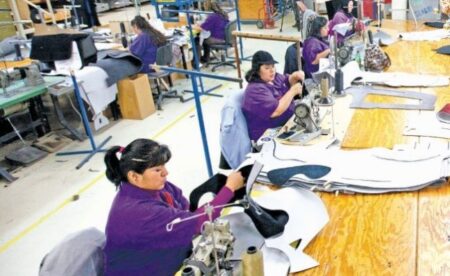En la actualidad, las empresas certificadas en IMMEX e IVA e IEPS se enfrentan a cambios importantes en el panorama regulatorio del comercio exterior. Con las últimas modificaciones introducidas en la Segunda Resolución de Modificaciones a las Reglas de Carácter General en Materia de Comercio Exterior para 2024, publicada por la Secretaría de Hacienda y Crédito Público el 14 de octubre de 2024, las empresas se enfrentan a nuevos requisitos de cumplimiento, obligaciones más estrictas y un entorno regulatorio en constante evolución.
Obligaciones y Requisitos de las Empresas IMMEX
El programa IMMEX (Industria Manufacturera, Maquiladora y de Servicios de Exportación) promueve el sector exportador al otorgar incentivos fiscales a las empresas dedicadas a la fabricación y exportación de bienes. Para beneficiarse de este programa, las empresas deben cumplir con requisitos específicos y diversas obligaciones, entre las que se incluyen, entre otras:
- Mantenimiento de controles operativos y financieros: Las empresas certificadas IMMEX deben mantener registros y controles estrictos sobre las mercancías y materiales importados temporalmente para asegurar el cumplimiento de las regulaciones de comercio exterior.
- Mínimos de exportación: Las empresas IMMEX deben exportar al menos el 60% de su producción anual total para mantener sus beneficios bajo el programa.
- Sistemas de control de inventarios: Es obligatorio el seguimiento detallado de la importación temporal de materias primas y la exportación de productos terminados, lo cual debe realizarse en un sistema automatizado de control de inventarios de acuerdo a la normatividad aduanera mexicana (Anexo 24).
- Informes: Proporcionar informe anual de las operaciones de comercio exterior, entre otros informes.
Obligaciones y Requisitos para la Certificación del IVA y del IEPS
Las obligaciones para las empresas Certificadas en IVA e IEPS incluyen, entre otras.
- Pago de impuestos y contribuciones: Las empresas deben estar al corriente en el pago de todos los impuestos aplicables, incluyendo el IVA y el IEPS, ya que el incumplimiento puede resultar en sanciones o suspensión de los beneficios de la certificación.
- Notificación a autoridades fiscales : Notificar a la AGACE en caso de que se produzca algún cambio de: nombre, razón social, domicilio fiscal, alta o baja de instalaciones donde se realicen procesos productivos, socios, accionistas, clientes y proveedores, o se realice un cambio de prestadores de servicios de personal subcontratado.
- Exportaciones: Las empresas con Programa IMMEX y Certificación de IVA e IEPS, cuyo proceso implique la fabricación, transformación o reparación de mercancías, deberán retornar aquellas mercancías que hayan sido utilizadas en dichos procesos en al menos el 60% del valor total de las importaciones temporales de insumos realizadas durante el periodo señalado. Salvo las empresas que importen temporalmente o pretendan importar temporalmente mercancías de las fracciones arancelarias señaladas en el Anexo II del Decreto IMMEX y/o Anexo 28, deberán retornar al menos el 80% del valor total de las importaciones temporales de insumos realizadas en los últimos 12 meses.
- Informes: Para conservar la certificación del IVA y del IEPS, las empresas deben presentar al SAT informes detallados sobre sus importaciones y exportaciones, niveles de inventarios y pagos de impuestos, incluyendo inventario inicial y egresos (Anexo 31).
Cambios en la Segunda Resolución de Modificaciones a las Reglas de Carácter General de Comercio Exterior para el año 2024
Las recientes modificaciones a las Reglas Generales de Comercio Exterior introducidas en 2024 presentan nuevos desafíos tanto para las empresas certificadas IMMEX como para las certificadas IVA e IEPS. Estos son algunos de los cambios que las empresas deben tener en cuenta:
A. Cambios al Anexo 24
- Se adiciona el apartado C, que hace referencia a la información mínima que debe contener el sistema automatizado de control de inventarios de las empresas certificadas.
- El software de control de inventarios deberá recibir electrónicamente, en un plazo máximo de 48 horas, la información contenida en el apartado A del Anexo 24, correspondiente a la información mínima que deberá contener el sistema automatizado de control de inventarios, misma que deberá obtenerse electrónicamente del sistema corporativo. El resto de la información se recibirá al momento del pago del pedimento correspondiente.
- La empresa deberá otorgar a las autoridades acceso en línea al sistema en todo momento, para lo cual las empresas deberán otorgar el usuario y contraseña para el ingreso, mediante documento escrito libre presentado ante la oficina oficial de la Administración General de Auditoría del Comercio Exterior (AGACE).
B. Devolución de importaciones temporales
Para obtener el registro en el esquema de certificación de empresas, del impuesto al valor agregado (IVA) y del impuesto especial sobre producción y servicios (IEPS), las empresas que ya importan o planean importar temporalmente mercancías sensibles al amparo del programa de la Industria Manufacturera, Maquiladora y de Servicios de Exportación (IMMEX) deberán devolver al menos el 80% del valor total de las importaciones temporales realizadas durante los últimos 12 meses.
C. Garantía del interés fiscal del IVA o IEPS mediante fianza o carta de crédito.
- Se actualiza el plazo requerido de la fianza o carta de crédito para la aplicación de la garantía individual o revolving a 30 meses (anteriormente era de 12 o 24 meses).
- Se añaden requisitos adicionales para la solicitud de aceptación de la garantía de interés fiscal, por ejemplo:
- – Contar con personal para realizar el proceso productivo o prestar el servicio.
- – Haber registrado ante el Servicio de Administración Tributaria (SAT) todos los domicilios en los que realicen actividades relacionadas con el programa de maquila o de exportación.
D. No estar suspendido en el registro de importadores, en el registro de importadores de sectores específicos ni en el registro sectorial de exportadores.
E. Nuevas sanciones por incumplimiento
Las reformas también introducen sanciones más estrictas para las empresas que no cumplan con las normas actualizadas de comercio exterior. El incumplimiento de los requisitos de presentación de informes, los controles de inventario inadecuados o el pago tardío de impuestos pueden dar lugar a multas, la suspensión temporal de los beneficios de la certificación o incluso la revocación de la certificación IMMEX y del IVA e IEPS.
Navegando por los desafíos futuros
Los cambios recientes en las regulaciones de comercio exterior en 2024 representan un mayor control para las empresas certificadas IMMEX e IVA e IEPS. Para seguir cumpliendo con las normas y minimizar las interrupciones, las empresas deben tomar medidas proactivas, entre ellas:
- Confirmar que el software del Anexo 24 esté actualizado a las nuevas regulaciones para garantizar el cumplimiento y que facilite las auditorías internas
- Mantenerse informado de los cambios regulatorios consultando con expertos legales y fiscales especialistas en leyes aduaneras y de comercio exterior mexicano.
- Invertir en capacitación para los equipos de cumplimiento para garantizar que comprendan las últimas expectativas regulatorias y puedan implementar medidas de control efectivas.
Al comprender estos cambios y adaptarse a los requisitos mejorados, las empresas pueden mantener sus certificaciones, evitar sanciones y seguir prosperando en el sector exportador de México. Si busca asesoramiento y apoyo de expertos durante estos desafíos, ¡no dude en contactarnos! Los servicios de comercio exterior de Mexcentrix pueden ayudarlo a ejecutar sus operaciones de manera eficiente, al mismo tiempo que reduce los riesgos y los costos.





